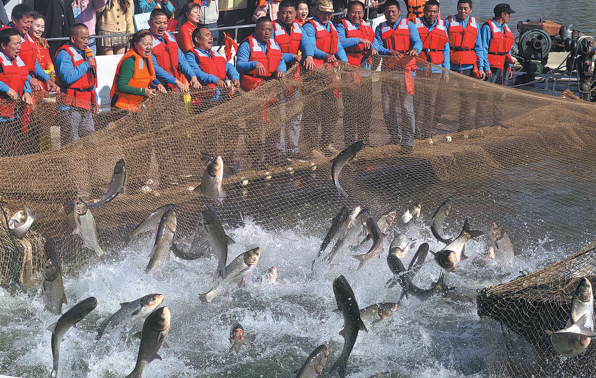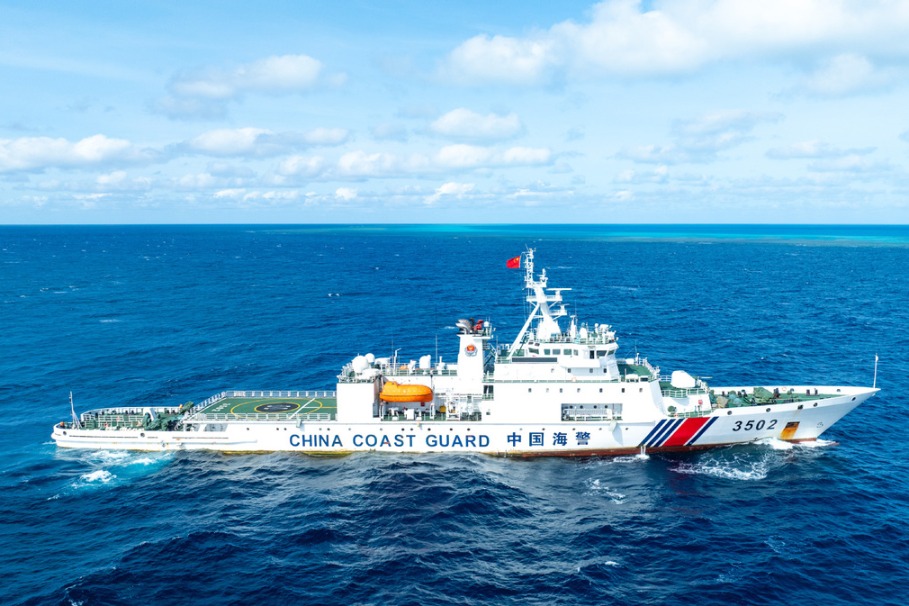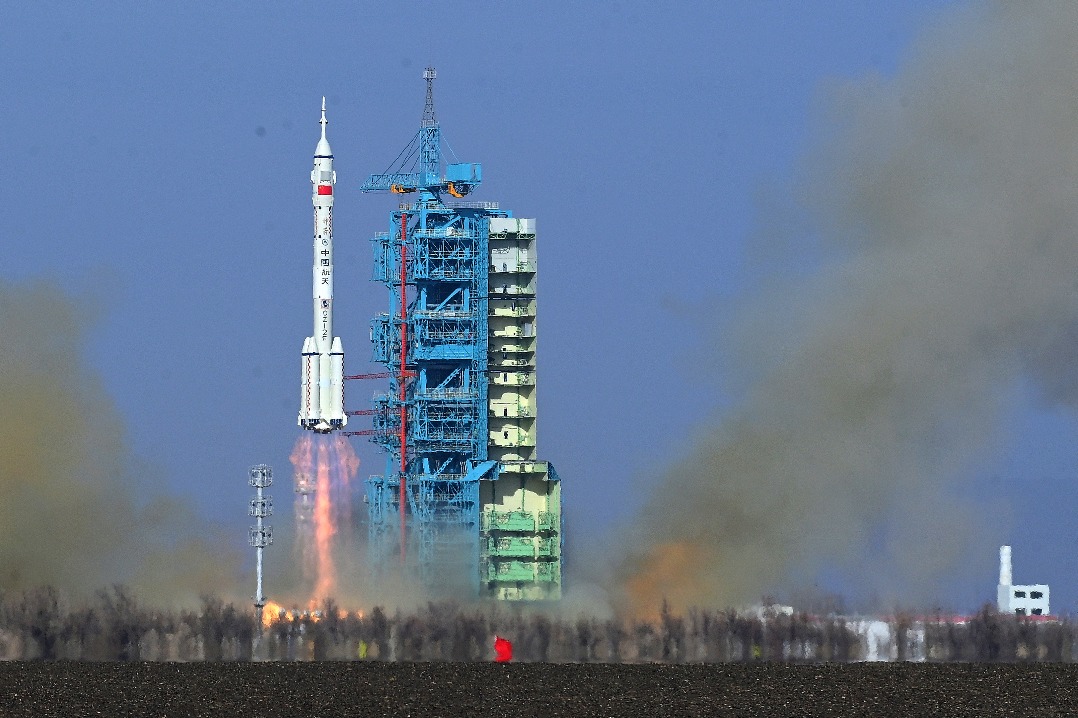Innovation crucial to agri development
Self-reliance, sustainability and food security are core issues for the country


China's comprehensive, integrated national strategy for agricultural and rural modernization must achieve substantial progress during the upcoming 15th Five-Year Plan (2026-30), officials and experts say, as rising demands for food and global uncertainties stand as persistent challenges.
The core goals for agricultural modernization are to transform the entire sector through technological innovation, mechanization, scale, infrastructure and sustainability. For rural modernization, the government aims to reduce the gaps between rural and urban areas in terms of public services, infrastructure, income, employment and governance.
Self-reliance, food security and sustainability are core issues for the country, and strengthening agricultural science and technology development in these areas is key to achieving them, experts said following the October release of the Recommendations of the Central Committee of the Communist Party of China for Formulating the 15th Five-Year Plan for National Economic and Social Development.
According to the recommendations, China has placed agriculture, rural areas and farmers at the top of its policy agenda, with a core strategy of accelerating the development of an agricultural powerhouse.
Han Wenxiu, executive deputy director of the Office of the Central Committee for Financial and Economic Affairs, said the document places strong emphasis on accelerating agricultural and rural modernization and advancing comprehensive rural vitalization, a crucial component that will determine both the overall scope and quality of the Chinese path to modernization.
"Agricultural and rural development is regarded as the most important shortcoming that should be addressed as a priority," said Han, who is also the director of the Office of the Central Rural Work Leading Group.
The document calls for improving the capacity, quality and efficiency of agricultural production by increasing grain output and farmers' incomes while ensuring ecological sustainability, he said at a news conference in October.
Efforts will focus on developing high-quality, green and brand-oriented agriculture utilizing science and technology to transform Chinese farming into a modern and large-scale industry.
"The recommendations highlight the importance of strengthening farmland protection and innovation in agricultural science and technology to ensure that China's food supply remains secure and stable," he said.
Realizing self-reliance in agricultural science and technology is a strategic cornerstone for building an agricultural powerhouse, the agriculture and rural affairs committee of the Chinese People's Political Consultative Conference said in a statement released in early November.
The committee emphasized that research should focus on forward-looking agricultural breakthroughs to tackle major scientific challenges, strengthen innovation in germplasm resources and achieve self-reliance in core seed technologies and key varieties.
It also proposed improving the institutional framework for agricultural innovation by integrating resources across departments and disciplines at different levels. Agricultural enterprises should play a leading role in innovation, forming a collaborative system that tightly integrates enterprises, universities and research institutes, it said.
Growing capacity
Experts from the National Agro-Product Processing Technology Research and Development System, a comprehensive, multilayered national framework designed to provide scientific and technological support for the modernization of China's agricultural and food processing sectors, met in Taixing, Jiangsu province, recently to discuss the upcoming five-year plan.
They shared several pioneering results, including technologies for preserving frozen meat, the deep processing of rice, apple fermentation and the more efficient processing of lychees.
Fan Bei, deputy head of the Institute of Food Science and Technology at the Chinese Academy of Agricultural Sciences, said these cutting-edge technologies show China's growing capacity to solve challenges in agricultural production and food processing.
In the coming years, the system will deepen cooperation between research institutes and enterprises, as well as drive high-quality development in the agricultural processing sector to ensure national food security, she said.
At the event in Taixing, the China Institute of Future Agricultural Products Processing and Innovation was established by the CAAS and the Taixing city government. The institute will focus on key areas including precision nutrition and health, intelligent processing equipment and new food materials.
"The new institute aims to bring laboratories directly into industrial parks, enabling researchers to engage closely with enterprises and accelerate the transfer of scientific achievements into market-ready applications," said Fan, who is also the director of the Taixing institute.
The goal is to attract top scientific resources and align them with industry needs, while integrating industrial capital to support commercialization of frontier research, she said.
Fan added that by applying new and advanced technologies to upgrade traditional agro-processing, China can drive the sector toward intelligent, green and high-Wend development, boosting value-added output and competitiveness.
Improving farmland
As China embarks on its 15th Five-Year Plan, the country faces mounting resource and environmental constraints, prompting an urgent need to transform its agricultural development model, according to a statement from the CPPCC's agriculture and rural affairs committee.
Liu Xianwu, vice-president of the CAAS, said the Chinese agriculture sector is shifting from a traditional model driven by resource and input expansion to one powered by science, technology and innovation.
"The effective utilization coefficient of farmland irrigation water in China rose from 0.53 in 2014 to 0.58 in 2024, yet it still lags behind the level of over 0.7 seen in developed countries," Liu said.
"Facing the pressures of increasingly frequent extreme weather and tightening water constraints, producing more and better grain with less water has become a vital issue for ensuring national food security and sustainable agricultural development," he said.
To tackle these challenges, the CAAS plans to strengthen research in key technologies in intelligent agricultural machinery and establish a smart irrigation innovation consortium in collaboration with universities and enterprises, aiming to achieve three to five original breakthroughs at the international leading level within two years.
It will also accelerate the commercialization of research results by building smart irrigation demonstration bases that provide pilot testing services for enterprises, enabling technologies and equipment to move from laboratories to fields, Liu added.
China has been accelerating the construction of high-standard farmland, aiming to complete 71.7 million hectares by the end of this year and 80 million hectares by 2030. By the end of last year, over 66.67 million hectares had already been completed, significantly improving the country's capacity to mitigate droughts, floods and other natural disasters.
High-standard farmland refers to farmland that can guarantee high and stable yields regardless of moderate drought or flood conditions. This involves land being leveled, consolidated and interconnected with efficient irrigation and drainage systems and electricity.
According to the recommendations document, the government will continue to enforce strict farmland protection measures and ensure a balanced management system for land occupation and compensation. Efforts are being made to optimize land use, strengthen the protection of black soil and promote the comprehensive utilization of saline-alkali land to enhance farmland quality.
China has been stepping up efforts to make sure that the total area of its farmland does not fall below the red line of 120 million hectares.
A draft law on farmland protection and quality improvement in China was submitted to a session of the Standing Committee of the National People's Congress for its first reading in October.
Minister of Justice He Rong said despite existing legislation, there are still challenges such as the use of farmland for nonagricultural purposes and declining soil quality.
The draft outlines requirements for farmland protection, sets tight control measures over the utilization of farmland for nonfarming purposes and emphasizes efforts to improve farmland quality.
zhaoyimeng@chinadaily.com.cn
- Global gathering of Cantonese people opens in Guangdong
- China's draft airline rules represent progress for wheelchair users
- China steps up efforts to tackle wage-withholding employers
- Taicang factory builds inclusivity
- Scientists discover important Early Jurassic dinosaur tracks
- China's Shenzhou XXII spaceship docks with space station combination





































